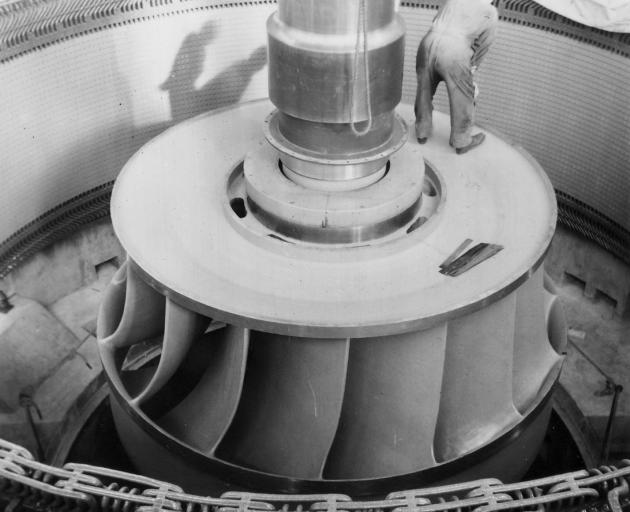
Contact Energy is replacing four of the hydropower turbines at the power station in a project spanning the next five years, working with German hydro- engineering manufacturer Voith Hydro.
The power station was commissioned between 1956 and 1962 and still generates with the eight original Canadian-built turbines.
The first four were installed in 1956-57 and the second four in 1960-61.
The first new turbine is scheduled to come online in 2024.
The replacement turbines will be designed using modern engineering and manufacturing techniques, resulting in more efficient use of the existing water flows and delivering an additional 44 gigawatt hours of energy in an average hydrology year.
Contact chief executive Mike Fuge said the project was another small but vital step in lowering New Zealand’s carbon emissions.
"While a turbine replacement project isn’t as grand as a new build, we are constantly looking for ways to demonstrate operational excellence and improve our generation efficiency."
It was expected Voith would supplement its international experts with local construction workers and New Zealand-based contractors, which was positive news for the Alexandra and Roxburgh communities, Mr Fuge said.
"Projects like these will have real, tangible benefits for our local communities."
The original turbines had performed extremely well for 70-year-old technology,band had provided clean, renewable electricity for New Zealand since the 1950s, Mr Fuge said.
"By updating the plant web can deliver more renewable energy for generations to come and remove 2000 tonnes of carbon dioxide emissions per year."
That was the equivalent to removing 9000 petrol cars from New Zealand roads.
Voith Hydro president and chief executive Stephen Lewis said Voith Hydro was honoured to be associated with the efficiency and performance improvement of the turbines at the Roxburgh Power Station.
The project would be executed in collaboration with Voith Hydro Engineering centres in the United States, Germany and India and the new turbines would be manufactured at Voith Hydro’s manufacturing facility in Vadodara in the Indian state of Gujarat.
The site works would be supplemented by local construction workers from a New Zealand-based subcontractor.
Voith Hydro was strongly committed to the long-term development of hydropower in Australia and New Zealand, Mr Fuge said.
Once the design, scale model testing and fabrication are completed by Voith Hydro, the turbines will be shipped to New Zealand. Contact expects the first unit to arrive in 2023. Each turbine will take about six months install and be commissioned.











